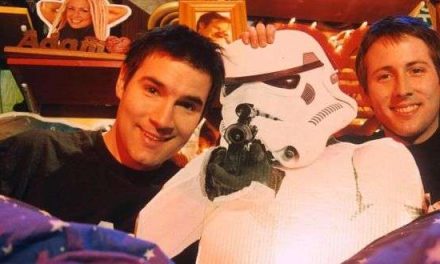Mapping medical television is a complicated task. Not only because of the ubiquity of medically themed programmes, or because of the generic, stylistic and formal hybridity that characterises them, but also because, for some curious reasons, the presentation of their subject-matter (medicine, or rather Medicine – in a hint to both the mystifying and de-mystifying aspects of its cultural framing) is more likely to attract critical dismissal than that of any other genre including crime shows, terror-TV, legal dramas etc (cf. Turow, Introduction, Location 112-120). One of the reasons is apparently medicine itself, more particularly the multiplicity of discourses and cultural ideas the term denotes (Klaver 4; Sadegh-Zadeh ix). Other issues that feature prominently in critical evaluations of these programmes are their formulaic dependence on the often cliché-like melodramatic imperative (cf. Hallam 194,196; Goodman 186), and their take on scientific and historical accuracy in the portrayal of the medical apparatus, especially as regards figurations of disease, technology, therapy, and protocol (Ostherr 212; Mittel 15; Clarke et al., 35).
Earlier I wrote about the complexity of signification, namely that medicine is more than just ‘science and practice, an art (of healing), a composite of techne and episteme in its own right that has always excited the minds of the public’. I argued that ‘images of illness and disease, and the ‘language’ of medicine are particularly conducive to reflections on socially sensitive questions of a given historic time.’ These include subjectivity, otherness, altruism, hospitality, gender and race, poverty and power, individual and collective responses to trauma, institutional and political structures and social controversies.

The Knick (2014-), Cinemax’s medical period drama provides an emblematic example for the convergence of these discourses. Directed by Steven Soderbergh, and scripted by Jack Amiel and Michael Begler, the programme is part of Cinemax’ rebranding strategy with which the channel aims at creating shows that compare in style, complexity and aesthetic ambition to HBO’s high-profile dramas. It shifts attention from the present state of medicine to its past, and traces the beginnings of the technological turn in modern-day medicine while offering a compelling insight into the circumstances of clinical practice at the turn of the 20th century. It bears significant similarities to Casualty 1900s (BBC One, 2008, broadcast in the US as London Hospital) – a British medical series focusing on the social history of a hospital in London’s East End – both in terms of visual style as well as the subject-matter, archived material and real life cases. In the following, I would like to expand these arguments and offer further points for consideration concerning television’s engagement with medicine as a form of social history.
Documentaries about the history of medicine (Pain, Pus and Poison: The Search for Modern Medicines(BBC Four, 2013), Blood and Guts: The History of Surgery (BBC Two, 2008), Human Anatomy and Medicine (Discovery, 2013), Surgery’s Dirty Secrets (BBC One, 2011); Battlefield Medicine (History Channel, 1999) just to mention a few) have always been interested in aligning cultural, technological, scientific and political change with discoveries and epistemic shifts in medical practice and healthcare. The Knick taps into this trend, while also admittedly situating itself between the period dramas of the past decade. The growing popular as well as critical interest in history of course is not without a precedent, but what is of particular interest here is the ways in which these symbolic representations inform understandings of the broader discourse on historiography – both in national and transnational contexts. The fascination with the end of the 19th century and the beginning of the 20th century has spawned a plethora of documentaries about lifestyles, cultural practices, shifting trends in fashion, dwelling, entertainment and industry. Alternatively, fictional dramas like Ripper Street (BBC One, 2012-), Penny Dreadful (Showtime, 2012-), Downton Abbey (ITV, 2010-) or Outlander (Starz, 2014-), Deadwood(HBO, 2004-2006) and Copper (BBC America 2012-2013) constitute a counter-history to the narratives we presume to be overly familiar with: by systematically revamping iconic cultural objects and ideas from the public domain of these periods, often mobilising elements of sensationalism through a highly stylised and visually amplified context of violence, subversion and mayhem, these dramas juxtapose the myth-making imperative underlying dramatisations of the national heritage with a hint of historical nostalgia.
Set in a fictionalised version of New York’s Knickerbocker Hospital ,the Knick offers a new take on the medical genre by fusing it with the narrative and stylistic traits of the docudrama and the period piece. The Knick’s narrative revolves around the social history of not just the hospital but also that of a city characterised by the atmosphere of the end of the Gilded Age. It recounts the efforts of a team of surgeons, nurses, and board members of the hospital trying to balance scientific discovery, therapeutic innovation, professional rivalry, and personal ambitions and flaws against the background of disease and trauma, corruption, political maneuvering, racial discrimination, economic hardships and class division.
The programme feels very modern thanks to its mise-en-scene, its subtle storylines, and the emphasis on historically accurate representations of medical procedures and devices. Like its British counterpart Casualty 1900s, it aligns the technological developments of the period (like the X-ray, electricity, the appearance of automobiles) with advancements in diagnostic and therapeutic practices. And yet, the show is also very grim and atmospheric in its depiction of diverse social milieus and its graphic portrayal of surgery. It mobilises contemporary ideas about the past of surgery that place certain procedures closer to butchery than to precision.
Apart from the strong ideological framing of the narrative, the cases presented on the programme all highlight the fundamentally transgressive character of therapeutic practice. Surgical procedures of course are pivotal to the concept as they provide the primary vehicle for medical historiography. Spectacular depictions of procedures like a Caesarean cut, blood transfusion, abscess drainage, or experiments with cocaine for the purposes of anaesthesia take up a large amount of screen time, especially in the first season. These scenes are executed with (surgical) precision and with great attention to detail. Critics and audiences have praised the balance the series managed to maintain between its graphic and subversive visual style, historically accurate representations of surgery and the operating theatre, and the capturing of tension and immediacy in the actors’ performance. The creators rely extensively on professional advice brought on board by Stanley Burns, founder and curator of the Burns Archive, and on materials, photographs of surgery and surgical equipment taken from the Archive.
The concepts of spectacle and of the medical gaze are central to the logic of composition. The spatial arrangement of the surgical amphitheatre, with seats receding in a circular pattern around the operating table, is reminiscent of Eakins’ Agnew Clinic (1889), and mobilises a long iconographic tradition dating back to Vesalius. The true significance of the graphic audio-visual style of the series resides in its ability to move viewers out of their comfort zone – gesturing at the long way surgery has come, from butchery to precision, from messy human experiments to the sterility of today’s digital medicine.

The plot of the Knick seems to focus on the characters of Dr. John Thackery (Clive Owen), the upstart head surgeon with cocaine addiction, and the only black (and therefore racially stigmatised) surgeon Dr. Algernon Edwards (André Holland). The dynamism of the relation between Thackery and Edwards derives partly from professional rivalry and, on Thackery’s part, from an arrogant dismissal, mostly on racial grounds, which gradually morphs into a mutual appreciation of one another’s medical knowledge and skills. This, of course ties in well with the programme’s politico-ethical agenda to critique favouritism, political hierarchy, and elitist views of surgery as a predominantly white male profession at the time.
The rivalry between Thackery and Edwards provides much of the initial impetus, but what’s more important from the point of view of narrative tension is the constant referencing of the milieu of disease and death. While figurations of present day medicine are built around the denial of the ‘fragility and mortality of the human body’ (Lupton 1) by portraying biomedicine and surgery as weapons against malaise, disease and decay are presented as ‘collateral damage’ to the advancement of medical practice and public health.
Therefore the primary concern of the doctors and nurses of the Knick is innovation – to put available technology to use in the practice of medicine: in episode 4 of season 1 Dr Edwards uses a vacuum cleaner to motorise a suction machine used in surgery; episode 2 recounts a fatal mishap that accompanies the installation of electricity in the hospital – Thackery tries to use electricity for cauterisation but a short circuit sets the patient on fire, and the nurse trying to put the fire out gets electrocuted; in the same episode Mr. Barrow (Jeremy Bobb), manager of the hospital, tries to solve the shortage of corpses available for the purpose medical study and practice of surgical technique by swapping the bodies of deceased patients assigned for cremation with bodies of pigs (and then presenting the ashes to the families). On one occasion, Thackery uses an inflatable balloon inside a patient’s abdomen to reduce bleeding during a Caesarean section, but, in the season finale, he inadvertently kills a patient during a blood transfusion because he fails to understand the biochemistry of blood-types.
In truth, between 1885 and 1913 (the founding of the American College of Surgeons), the increasing technologisation of medicine (the introduction of electricity and X-ray, the expansion of surgical techniques, and, most importantly the proliferation of more advanced methods of anaesthesia and antisepsis) prompted an exponential growth in biomedical and therapeutic knowledge and helped reduce mortality rates in the operating theatre as well as in the hospital ward. As pain no longer put limits to surgical capabilities, surgeons were able to ‘perform more complex, invasive, and precise maneuvers than they had dared to attempt before’ (Gawande).
The doctors of the Knick are surrounded by the aura of technology-happy inventiveness without fully understanding the procedural and epistemic ramifications of technological innovation, which accentuates the strong ethical dilemmas surgeons as well as health-care policy makers were faced with. The implementation of techniques and technologies were dangerously under-regulated and hazardous, and although in a significant proportion of cases they did produce important results that effectively shaped the face of medicine, more often than not those results came at terrible costs. The Knick attempts to convey specific aspects of the ethos of this era to offer viewers both insight into the adventurous ways in which new knowledge was produced. The show depicts these attempts as both bold and heroic, and irrevocably subversive at the same time. It aligns (the history of) medicine with the epistemological tradition of Plato’s pharmakon – not only as a trope for undecidability (or, in Derrida’s rendition, an impossible possible [cf. Derrida 127]), but, through the implications of the double meaning of the word (poison AND remedy – intricately thematised through Dr. Thackery’s cocaine addiction and his experiments with the substance as an anaesthetic), also as an epistemic and ethical paradox. In order to expand knowledge, to test, perfect, and document (archive!) specific techniques, the surgeons of the Knick and, by extension, of the period, need to transgress borders: they need to risk harm in order to find / develop a cure. They need to perform acts of invasion (and violence) in order to mitigate a condition, they need to be progressive in order to render surgery a conservative practice (the purpose of which is to ‘conserve’ life and the integrity of the body). It is perhaps not by accident that critical re-assessments of the principle of non-maleficence (‘primum non nocere’ – first, do no harm) had been in the centre of discussions on medical ethics since the second half of the 19th century: the writings of Elisha Bartlett and Worthington Hooker formulate concerns about the reversal of medical practice in regard to therapeutic priorities, and criticise what they call a more initiative-driven and ‘heroic’ approach to therapy (Hooker, 219). The Knick’s success resides in its ability to identify specific dimensions of this narrative of progress, and, through amplification, to present them in a manner contemporary audiences can both relate to and distance themselves from.

What we have to understand, however, is that such transgressions, such subversive approaches to medicine are only possible because the practice of the profession was so under-regulated in the time the story is set. The difference between the transgression seen on House or on Grey’s Anatomy is significantly different, for on those programmes it functions as a vehicle for the conflict between ethical norms and practice, for the difference between doctrines and attitudes, whereas on the Knick it functions in lieu of such normative ethics and rationalised regulations and standards. In other words, we can say that, in an ironic twist, the subversive heroism, criticised by Bartlett and Hooker, and celebrated in the Knick, was actually one of the motors of the standardisation of procedures and the introduction of protocols (through the founding of the Society of Clinical Surgery in 1903, and of the American College of Surgeons in 1913 [cf. Martin, 17]). Put differently, The Knick can be regarded as an intriguing testimony that surgery (and healthcare) is safer and more efficient today precisely because of the subversive reciprocity that characterised the medical practice of the turn of the century.
As a consequence, The Knick, just like its British counterpart Casualty 1900s on the BBC, also goes at great length in mapping-out the complexity of the medical apparatus – the hospital as institution. Not so much as framework, but rather as an agent, as service provider, as a node in the gradually emerging healthcare system of the beginning of the century. Hospital care and clinical practice of course remain central to the concept of the drama, but unlike in most medical shows set in the present, medical practices in The Knick extend beyond the operating theatre and the ward, and may occasionally involve co-operations with authorities such as the police: in Season 1 Cornelia helps a police inspector to investigate and contain a typhoid outbreak, in Season 2 Mr. Barrow agrees to provide ‘sub rosa’ healthcare services for the prostitutes of a near-by brothel. In Season 1 Dr Edwards, in response to the board of surgeons’ decision to ban him from entering the operating theatre in a working capacity, and to put his skill and knowledge to good use, establishes his own peculiar form of a free clinic, operating from the basement of the hospital, receiving and treating patients during the night. Sister Harriet, a nun working in the hospital, attends to poverty-stricken neighbourhoods and gives women illegal abortions (for which she goes on trial in Season 2).
The idea that the history of medicine provides a broad and productive framework for the history of society, technology, the history of thought, of social and cultural change, even the history of politics and economy, is not a new one. But The Knick’s preoccupation with medicine’s historical context is perhaps not meant to suggest that medicine sits in the apex of converging socio-economic, technological, and cultural tendencies. That would, of course, re-inscribe cultural ideas about a linear, evolutionary model of history as a master-narrative, predicated on the principle of constant progress. To avoid such reductionism, I’d argue that what’s more intriguing, more revelatory, also with respect to our present historic time, is not so much the history of medicine as it is its historiography: the ways in which symbolic representations produce medicine AS history, and the ways in which this history is circulated today. In this respect, what makes The Knick stand out both as a medical as well as a historical drama is its ability to connect manifestations of contemporary medical nostalgia with medicine’s subversive history, and to read this history against the background of a social context that is no less nostalgic in character and no less subversive; it emerges as a curious form of social pathology.
David Levente Palatinus holds a lectureship in Contemporary Literature and Culture at the University of Ruzomberok. He has published on forensic crime fiction, corporeality, digital media, and violence and deconstruction. He is currently working on a booklength project called “The PathologEthics of Culture.”





